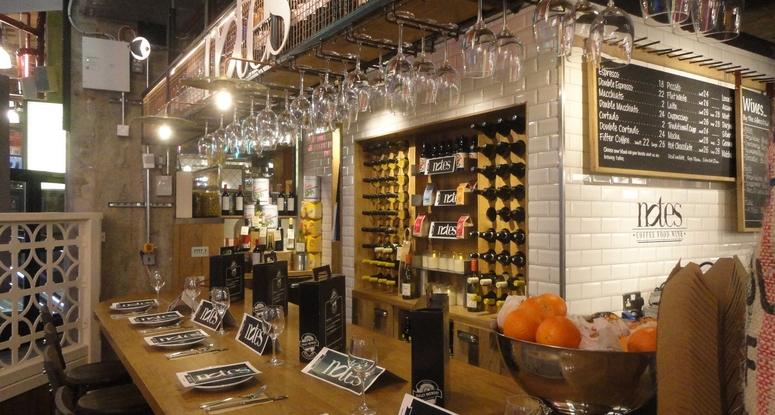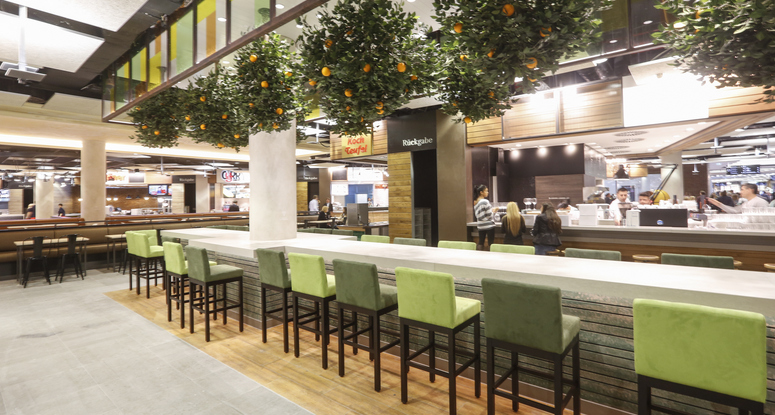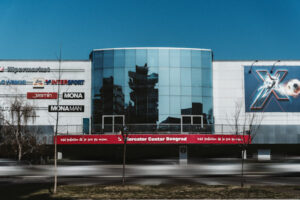The global retail and leisure landscape is undergoing fundamental change—lasting and structural, driven by macro-demographic trends, technological advancements, and ever-evolving consumer expectations.
The combination of these trends and expectations is having a huge impact on both the retail and foodservice sectors globally, in terms of consumer spending patterns and space allocation. Across most countries, consumer spending on foodservice has been outpacing grocery spending—and indeed all retail spending—in recent years.
Furthermore, as spend shifts from transactional to experiential food offers, food and beverage (F&B) is growing in importance to retail real estate. Implemented correctly, foodservice drives footfall, dwell time, spend, and overall sales growth—the “halo effect.”
To be sure, more restaurants and bars do not necessarily lead to success for shopping centers, as this huge expansion in space allocation comes with opportunities (e.g., increased footfall and sales) but also risks (e.g., oversupply).
Overall, however, F&B can now act as an anchor. The ICSC study explored the impact of foodservice growth on retail real estate, considerations and best practices for the successful integration of foodservice, and the outlook for the future.

What are the implications for real estate?
There are major issues and challenges that landlords need to consider when expanding, Adapting, or innovating their foodservice component. The biggest challenge for landlords is to understand how their support for restaurant operators differs from their responsibilities to traditional retailers.
There is a consensus from landlords that, while there are clearly frontrunners and landlords who understand the requirements of foodservice operators, the industry remains at the beginning of a journey and there are many lessons to be learned. Specifically, lessons for landlords regarding leasing, asset management, and valuing shopping centers include: rental levels, lease lengths, tenant mix, strategic approaches, operations, and partnerships with foodservice operators.
There are outstanding best-practice case studies from around the world that illustrate how foodservice can be successfully integrated into shopping centers of different sizes and formats. There is certainly no “one-size fits all” optimum solution, but broad lessons can be taken from each “exemplar of excellence.”
The ICSC study sets forth how large-destination shopping centers can benefit from creating a dining destination, how small neighborhood shopping centers should focus on servicing the needs of the local population, how mixed-use schemes need to create destinational appeal, and how upgrades/redevelopments can transform a property through elemental change or the addition of new areas designated solely for restaurants.

Outlook for the foodservice sector within shopping centers
The exponential growth in the quantity and quality of foodservice in shopping centers has had a broadly positive influence on the sector and gone a long way to providing the experience needed to meet changing consumer demands in the new world of retail and leisure. However, the industry is still at the beginning of a transformational journey. Food will be at the forefront of that change and will continue to play a crucial role in future-proofing retail places.
Understanding how technology is driving innovation and change in foodservice is imperative. Technology is improving operational efficiency and service, enabling “hyper-personalized” experiences, creating game-changing online delivery services, and contributing to risks already facing the industry.
Conclusion
Navigating opportunity, identifying risks and challenges, and planning successfully for the future of foodservice within the shopping center space requires careful consideration. An appropriate foodservice offer, combined with effective implementation, will reap rewards.
Landlords must know their own customer and community and then customize the food offer accordingly. This is arguably far more important and complex for food than it is for retail. They must be aware of the trends shaping the food market, and ensure that offers remain fresh and vibrant. They must be alert to the current and future disruptions that might be caused by technology. They need to get much closer to operators to understand their business models and requirements and guide them on their shopping center journeys.
Finally, they need to take steps to measure the benefits (both direct and indirect) that food brings to their centers—without evidence, how can improvements be made?
The future for the foodservice sector is bright, but as it grows up, so the need grows to apply greater rigor and science to planning and executing foodservice strategies.





